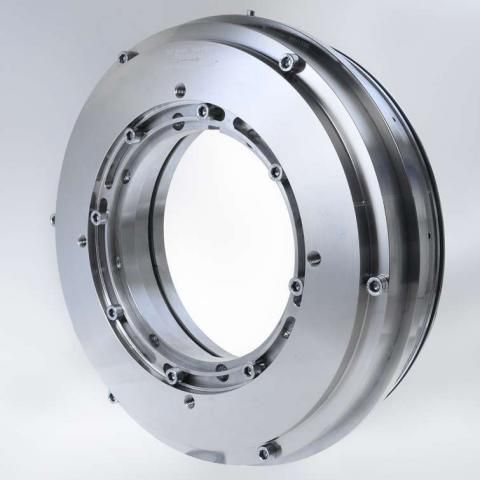Use of separation seal prevents disasters
Control separation nitrogen pressure using a differential pressure transmitter sensing

secondary vent pressure to ensure a nitrogen atmosphere between the secondary seal and separation seal to positively prevent a hydrocarbon release to the plant environment.
Frequently called the ‘disaster bushing’, the separation seal is the last item in the dry gas seal chamber than can prevent a gas release to the plant environment.
If the separation gas system (usually
nitrogen
) is designed with a differential pressure controller to regulate supplied separation gas above the secondary seal vent pressure 20 to 40 kPad (3 to 6psi), positive sealing will be ensured.
Separation systems
Regardless of the type of seal configuration (double or tandem), the function of the separation system is to prevent process gas from entering the bearing housing in the event of a seal failure, and oil from entering the seal catridge. Entrance of process gas into the bearing housing exposes the plant to catastrophic consequences and extended downtime.
There are severak types of separation seals. The choice depends on the availability of the separation gas (usually
nitrogen
). The alternatives, arranged in order of highest usage of separation gas, are:
- Labyrinth seals
- Abradable labyrinth seals
- Non-contact carbon seals
- Segmented carbon contact seals
The best practice is to use labyrinth or abdradable labyrinth separation seals, if sufficient N2 is available. This recommendation is based on the reliability of labyrinth-type seals compared to carbon seals, and the fact that the differential pressure across labyrinth seals is not limited, as is the case for most carbon ring seals. If carbon ring seals are used, the control system must limit the differential pressure to the design maximum. In addition, if carbon contact seals use cryogenic
nitrogen
, the best practice is to condition the
nitrogen
.
Experience shows that in the case of a catastrophic seal failure, there is a possibility that process gas could enter the bearing housing through the separation seal. For this reason, the best practice is to individually vent each of the bearing housings to a safe location.
The method of separation gas control depends on the type of seal selected. For labyrinth and abradable labyrinth seals, the best practice, is to use differential pressure control to each seal. For carbon ring seals, pressure control could limit the maximum differential pressure across the carbon rings.
The condition of each separation seals can be determined by monitoring and alarming on low differential pressure for labyrinth and abdrable labyrinth seals, For carbon ring seals, monitoring and alarming on low pressure is recommended. These parameters should be used as permissive signals to prevent starting the oil system if
nitrogen
gas is not being supplied to the separation seals.
Failure to use a differential pressure controller for the separation seals system has resulted in process gas releases to the plant environment during tandem seal reliability.
This best practice has been used since 1990 in projects to optimize plant safety and reliability (no known process gas releases for the subject projects and seal MTBFs greater than 70 months).